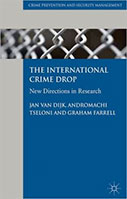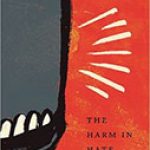The International Crime Drop: New Directions In Research

Editors: Jan van Dijk, Andromachi Tseloni and Graham Farrell
Publisher: London; New York: Palgrave Macmillan, 2012. 360p.
Reviewer: Franklin E. Zimring | May 2013
Edited volumes on transnational trends in criminal behavior might not sound like fascinating reading, but this one turns out to be a very pleasant surprise. Van Dijk, Tseloni and Farrell have carefully assembled an empirically sophisticated and theoretically ambitious argument that crime has been trending downward in the developed world. The main emphasis in their developed world analysis is placed on the International Crime Victim Survey (ICVS) which the editors have extensive experience creating and using. The first chapter on survey trends, by van Dijk and Tseloni, is a model of informed discourse even if its description of a “fairly consistent and universal pattern” seems a stretch. A second chapter, by Marcelo Aebi and Antonia Linde, then considers official crime statistics for much of the same periods as Chapter 1 in an aggregation involving many of the same Western European nations. The direction, magnitude and timing of the official statistics trends are not consistent over time for all crimes. The authors of Chapter 2 suggest that there is more similarity cross-nationally in the period they study than across crime categories.
These two “global” analyses are supplemented by three excellent national-level analyses on Australia and New Zealand (by Pat Mayhew), on England and Wales (by Britton, Kershaw, Osborne and Smith) and on Switzerland (by Killias and Lanfranconi). There are also three chapters devoted to specific offense trends, one on homicide in non-Western nations (by del Frate and Mugellini), one on car theft in the United States (Fujita and Maxfield) and one on violence against women (Kangaspunta and Marshall).
The reliance on ICVS data is to be expected since the senior editor of the volume founded the program but it is not without its costs. The first round of these surveys took place at the end of the 1980s and this provides at maximum only a 25-year time horizon. Integrating victim survey findings with official crime trends is not an easy task any time or anywhere, and the short double track now available doesn’t help matters. Also, the lack of homicide data in survey data is a particular problem when the official crime data in Chapter 2 suggest separate temporal trends for violence and property offending. Is the increase in official violent crime an artifact of reporting sensitivities? We might check that with homicide trends.
A significant virtue of this collection is the variety of different empirical frames used in the studies. For people like me who doubt that there is a common trend across all crime types and developed nations, there are case studies that focus carefully on single nations and on particular crimes, and most of the authors of chapters are empirically oriented and inductive rather than engaged in the selective data picking of true believers. The other thing that most of the contributors are is excellent criminologists. Many senior scholars of distinction appear in the volume, ranging from Pat Mayhew to Marcus Felson, with empirically-oriented Americans like Rosenfeld and Messner joining an all-star European and Commonwealth team.
This book is a well-informed and sophisticated down payment on investigating a fascinating set of unresolved questions. It demonstrates a style of comparative criminology that American scholars need to read and to imitate.
Franklin E. Zimring is the William G. Simon Professor of Law and Wolfen Distinguished Scholar at the University of California, Berkeley.


